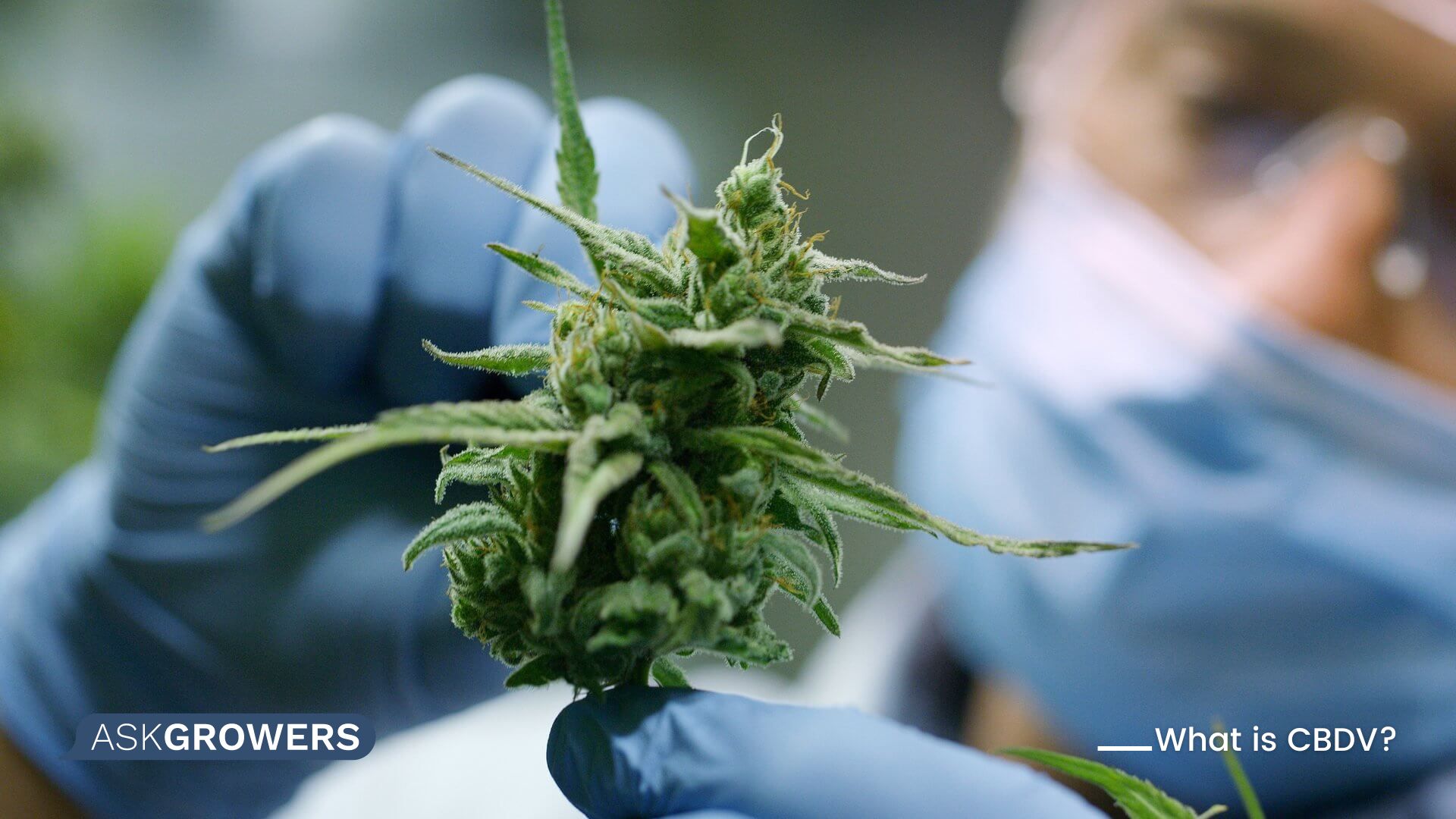
What is CBDV and how is it different from CBD?
CBDV or cannabidivarin is one of the cannabinoids found in marijuana. In terms of structure and properties, cannabidivarin is most similar and close to CBD. CBDV is a propyl analogue of CBD, although they are not identical.
It was discovered in 1969 along with other cannabinoids, including the better known THC and CBD. However, its valuable medicinal properties have only recently been studied.
In the late 2010s, scientists drew attention to the fact that the therapeutic properties of СBDV are somewhat different from the effects of other cannabinoids on the human body.
Properties and health benefits of CBDV
The past few years have been fruitful in terms of research into the benefits of CBDV. Some of these studies have been officially supported by pharmaceutical giants as well as the US government.
RELATED: The 7 Best Marijuana Strains for Overall Good Health and Disease Prevention
Much of the CBDV research is so new that it has not yet reached the clinical trial stage. The studies presented here are therefore mainly preclinical studies that were carried out in laboratories and animal models. But perhaps unsurprisingly (for those who already know something about cannabinoids), the research base supporting CBDV’s tremendous potential is already compelling.
Health benefits of CBDV include:
- Anticonvulsant property. Makes it an impeccable remedy for the treatment of epilepsy of various origins. This effect is still under investigation. However, it is already known that the ability to reduce seizures does not depend on CB1 receptors.
- Reduces nausea. Scientists hope that CBDV, like other cannabinoids, has potent antiemetic properties. In 2013, a study was conducted on rats, leading to hope that CBD-V has the potential to reduce such symptoms.
- analgesic property. Research is being conducted into CBDV’s ability to reduce neuralgic pain.
- Reduces anxiety. One of the CBDV effects is mental state improvement due to its effect on the balance between excitatory (glutamate) and inhibitory (GABA) neurotransmitters.
- antibacterial effect. Especially against gram-positive bacteria. However, this property is less pronounced than with CBD.
- Antioxidant potential. Reduces inflammation and protects nervous system cells.

What diseases does CBDV help treat?
The main research on CBDV has mainly focused on its functions in relieving the symptoms of nervous disorders. Most studies have been conducted on animals. But they showed good results, which give hope for effective application in different directions.
CBDV and neurological diseases
Administration of CBDV can reduce the neurological and social problems caused by Rett Syndrome. This is a disease that affects brain development. Studies in mice have demonstrated CBDV’s ability to improve memory and motor coordination, as well as regulate expression levels of CB1 and CB2 receptors.
Cannabidivarin in Autism Spectrum Disorders
Preclinical studies have shown the indispensable role of cannabidivarin in autism. The connection is that the cannabinoid can affect excitatory-inhibitory processes in the brain associated with autistic disorders. One of the big pharmaceutical companies is currently conducting the final phase of research related to Autism Spectrum Disorders.
CBDV in Duchenne muscular dystrophy
Studies have shown that CBDV promotes muscle growth. This is true for both healthy people and people with DMD, a genetic condition that causes progressive muscle wasting. This occurs due to the formation of myoblasts and myotubes, as well as activation of TRPA1 and TRPV1 receptors.
CBDV vs. CBD – Which is Better?
CBDV is most similar to CBD, but scientists have already figured out what CBDV cannabinoid is and its special properties that differ from CBD. The difference is only in the length of the side chain. CBD is made up of 5 carbon atoms while CBDV is made up of 3 carbon atoms. Carbon length affects the ability of cannabinoids to bind to endocannabinoid receptors and the nervous system, and is therefore an important property of the substance.
Possible CBDV side effects and safety measures
CBDV is a non-psychoactive cannabinoid similar to CBD. Unlike THC, delta-8-THC, and THC-O, this cannabinoid is safe to use and has few side effects. Studies have shown the lack of toxicity, dangerous symptoms, and withdrawal symptoms.
RELATED: What Is THC-O, and Why Is This Psychedelic Cannabinoid 3x Potent Than THC?

Strains high in CBDV
Most commonly, CBDV is used in indica strains from Pakistan, Mexico, or India.
If you want CBDV-rich cannabis, you should check out strains like these:
- Royal CBDV. It is one of the first strains of this cannabinoid. It contains 5% cannabidivarin, 5% CBD and a minimal THC level of 0.3%. This strain has a pine-earthy aroma and a noticeable boost of energy.
- CBDV car. This strain has a CBDV/THC ratio of 25:1 and around 4% CBD. It is a sativa with a mild earthiness and a light resin coating.
- forbidden by. It contains 5.6% CBDV and 8.6% CBD. The strain has a fresh and exotic fruity flavor and a terpene profile that invigorates and energizes creativity.
- pinewalker. The strain has 8.48% CBD and 6.80% CBDV. It is characterized by the taste of lemon and the scent of needles, as well as indica properties.
Where can you get products with CBDV?
People who have developed an appetite for CBDV are wondering if it is possible to legally buy products containing it. Whatever the goal, it is better to consult a doctor beforehand. He will tell you which cannabis strain suits your personal needs. It is much more effective and safer than self-medication.
Conclusion
As research into the effects of CBDV is ongoing, we can expect new results from this research soon and accordingly await sensational products that would help solve a range of medical problems.

Post a comment: